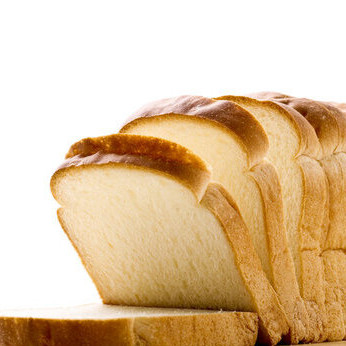
Tangzhong Method
What is the Tangzhong Method?
The tangzhong method is an Asian technique for making yeast-leavened baked goods characterized by a highly resilient and fresh crumb and subsequently a slower staling rate.
- Also known as water roux, tang zhong or just tangzhong, the method consists of pre-mixing and cooking part of the flour and the liquid (water or milk) of a bread formulation until obtaining a porridge or precooked starch gel.
- This gel is then used to improve the crumb texture of sliced bread, milk rolls, butter rolls, Swiss rolls and many more.
Origin
Many may agree that the Tangzhong method for making bread was the result of a post-war cultural exchange between European, especially French cooks, and Japanese bakers in the Hokkaido region. Others consider the tangzhong method closely resembles the scalding or blanching of certain cereal flours as processed in Europe.
How it works
From a technical point of view, the Tangzhong method is all about pre-gelatinizing the starch content of wheat or any other cereal flour used in a bread recipe.
Doughs made with the starch precook require more water to obtain standard dough consistency. This is due to swollen starch granules being able to hold much more water than native starch counterparts. Therefore, bread formulas containing the Tangzhong precook result in much higher hydration levels, even using white or patent flours.1
Pregelatinized flour directly affects dough rheology by increasing dough strength, expressed as Alveograph W-values. It also enhances finished bread volume, whose crumb exhibits a much slower staling rate. Similar to gums, the starch pregel contributes to texture and moisture management in the finished product.2
Application
The Tangzhong method is widely used in the production of Asian breads. One example is the Japanese (Hokkaido) milk bread.
Typical formulation of Hokkaido milk bread
- Precook (500% hydration)
| Ingredient | Baker’s % (based on flour weight) |
|---|---|
| Bread flour | 6.25 |
| Water (80°C) | 31.25 |
| Total | 37.50 |
- Dough (75% hydration, global)
| Ingredient | Baker’s % (based on flour weight) |
|---|---|
| Bread flour | 93.75 |
| Milk (pasteurized), cold* | 43.0 |
| Granulated sugar | 12.0 |
| Liquid whole eggs, cold** | 8.0 |
| Butter (unsalted), melted*** | 8.0 |
| Salt | 2.0 |
| Instant dry yeast (IDY) | 1.6 |
| Precook, cold | 37.5 |
| Total | 205.35 |
*Water content, 87%
**Water content, 75%
***Water content, 20%
Processing
- Precook preparation: Incorporate the flour and water together, mix and heat at a temperature of 80°C (176°F) until a viscous, paste-like porridge is formed. If properly heated (at medium or low fire), the hot paste or precook is obtained within 2 to 5 minutes. Care must be exercised not to burn or overcook the flour/water paste.
- Precook cooling: Transfer the precook to a container and store at refrigeration temperature until used in the bread dough formula. Precook must be cold when added to dough to aid in dough temperature control and preserve yeast cells against heat stress.
- Dough mixing: Incorporate dough ingredients at low speed for 2 min. Switch to high speed and continue mixing to full gluten development; this usually takes 15–25 minutes at a final dough temperature of 26°C (79°F).
- Intermediate proofing: Allow bulk dough to rest and ferment until doubling its initial size; this usually takes about 1 hour at room conditions.
- Makeup:
- Punching of dough
- Dividing
- Rounding
- Sheeting, curling, and moulding
- Panning: Hokkaido pan bread usually has a high dough-to-pan ratio (usually higher than 0.28 g/cm3).
- Final proofing: Proof to reach ¾ full pan height at 38°C (100°F) and 75% RH. This usually takes 45–60 minutes.
- Baking (at sea level): Bake the product with or without the lid placed on top at an oven temperature of 200°C (392°F) for about 20 minutes until an internal temperature of 95°C (204°F) is obtained. Bake time is usually longer than open top bread.
- Cooling: Remove product from pan and allow it to cool at room conditions to an internal temperature of 32°C (90°F). Cooling usually takes 60 minutes to reach final temperature.
- Packaging or serving
References
- BeMiller, J.N. “Starches: Conversions, Modifications, and Uses.” Carbohydrate Chemistry for Food Scientists, 3rd edition, AACCI. Published by Elsevier Inc. in cooperation with AACC International, 2019, pp. 212–215.
- Ottavia Parenti, Lorenzo Guerrini, Valentina Canuti, Giulia Angeloni, Piernicola Masella, Bruno Zanoni, The effect of the addition of gelatinized flour on dough rheology and quality of bread made from brown wheat flour, LWT, Volume 106, 2019, Pages 240–246, ISSN 0023-6438, https://doi.org/10.1016/j.lwt.2019.02.066.

